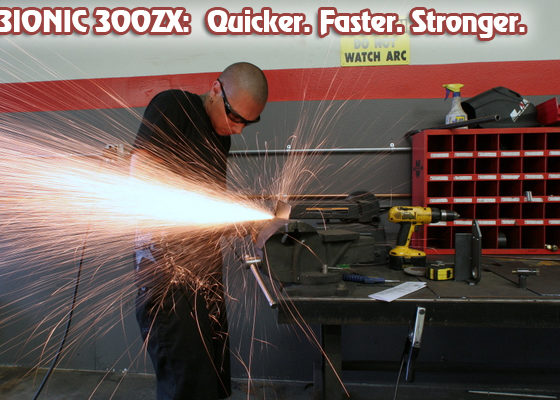,
 |
| A diagram of a wide band O2 sesnor |
Above is a diagram of how a wide band sensor is physically laid out. The pump cell is located on the top and the narrow band zirconia Nernst cell is on the bottom. Wideband O2 sensors can be spotted because all this stuff needs 5-6 wires to run it, more than the other types of O2 sensor. Below is a chart showing the voltage output of a wideband O2 sensor in respect to the air fuel ratio. Note that the voltage curves are fairly linear but the slopes of the curves are different between rich and lean conditions. This is because two different types of chemical reactions drive the consumption of fuel or oxygen in the pump cell.
Is the wideband O2 sensor infallible? No, it can be fooled by a couple of different things. The most common thing is exhaust back pressure. A high exhaust backpressure forces more exhaust into the sensors pump cell which can cause an air fuel ratio meter to read richer than what the engines really running. Turbo engines run a relatively high amount of backpressure in the exhaust manifold before the turbine. Many a turbo engine has been blown up because a tuner unknowingly installed the bung of his wideband o2 sensor in the exhaust manifold instead of the downpipe. Missfires due to a malfunctioning or underpowered ignition or an extremely rich mixture can cause false lean readings because unburned liquid fuel in droplets or a mist cannot enter the small hole leading to the sensors pump cell.
 |
| Voltage output vs air fuel ratio for a wideband sensor |
Wideband sensors can also be easily damaged by certain conditions. A wideband sensor should not be placed in the exhaust stream and left unheated. The hole to the pump cell can quickly become clogged and contaminated by exhaust byproducts especially during a start cycle from a cold engine. The sensor can be damaged by exposing it to temperatures above 700 degrees C, like those typically before the turbine in turbo engines. You never want to place a sensor there anyway due to the aforementioned issues with sensor accuracy and backpressure. Lastly you don’t want to place the sensor so far away from the engine that its 10 watt internal heater cannot keep the sensor hot enough.
Though use over time, the sensor’s voltage output varies thought its service life for the same air fuel ratio, a process called aging that can greatly effect an air fuel ratio meters accuracy. Aging is mostly due to oxidation of the sensors internals and fouling of its ceramic elements. Operating conditions and fuel type are big factors in the aging process. Exposure to lead in race gas, metallic elements in octane booster additives, oil or carbon fouling and really high operating temperatures contribute to rapid aging. Because of aging it is important to have an air fuel ratio meter that can be calibrated. The common type of calibration is called a free air calibration. This is when the meter compares the output of the sensor to what it should be when exposed to a know oxygen content gas, air. If an air fuel ratio meter is lacking the ability to calibrate, the sensor should be replace at regular intervals. The trouble is when should the sensor be replaced? It takes some experience to know when this is appropriate.
Since the Bosch LSU4 wideband O2 sensor is calibrated from the factory, are all of the readily affordable wideband air fuel ratio meters on the market created equal? We think not. We think that a lot of difference between different meters will lie in the controller and its circuitry. How the well the sensors heater is controlled and how the pump current is switched and controlled is critical for accurate sensor operation. The difference between how well these meters work will be how well suited the controller circuits are to the characteristics of the sensor.



